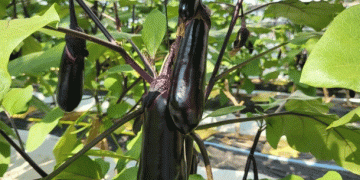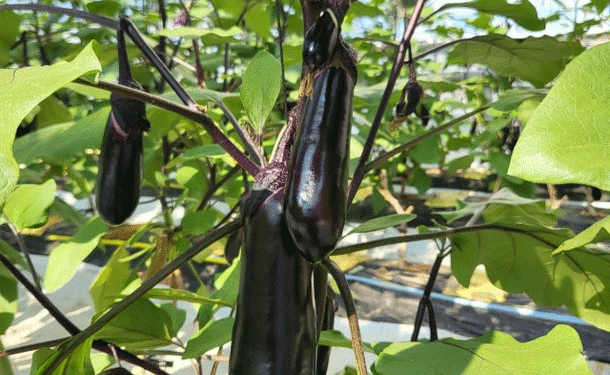Eggplant farming has long been recognized for its high labor demands, from chemical treatments to the tedious process of removing side branches. Particularly burdensome is the task of applying fruit-setting agents, which accounts for 30–40% of total labor in the cultivation process. To alleviate this strain, Gyeonggi Agricultural Research and Extension Services (GAES) in South Korea is focusing on developing methods to grow seedless eggplants without the need for pollination or fruit-setting agents.
Seedless Eggplants: A Growing Trend
Seedless eggplants are gaining popularity among farmers because they eliminate the need for fruit-setting treatments. However, cultivating these eggplants has presented challenges due to a lack of research on the specific water needs of the plants. When water levels are not carefully controlled, seedless eggplants may develop inconsistencies in size, texture, and overall quality, which can hinder both marketability and yield.
To address this issue, GAES launched a study in February 2023, aiming to define the optimal soil moisture levels for seedless eggplant cultivation. Their findings provide a clear understanding of how soil moisture affects both the speed of harvest and overall yield, offering crucial guidance for farmers seeking to adopt this method.
Research Findings: Water Supply’s Impact on Growth and Yield
The study measured the days from flowering to harvest under different soil moisture conditions, which were categorized using kilopascals (kPa), a unit measuring soil moisture tension. The results showed that:
- At 20 kPa, the harvest time averaged 22.6 days.
- At 10 kPa, it took 24.2 days.
- At 30 kPa, the harvest was delayed to 28.7 days.
These findings indicate that drier soil (higher kPa) leads to a slower harvest, as plants under 30 kPa conditions took the longest time to reach maturity. Conversely, a 20 kPa soil moisture level allowed for the quickest harvest, reducing the time between flowering and fruit picking.
Beyond growth speed, soil moisture also influenced yield. On a 300-pyeong (approximately 1,000 square meters) plot, eggplants grown at 20 kPa produced 9,044 kg, compared to 8,276 kg at 10 kPa and 7,987 kg at 30 kPa. This means that maintaining soil moisture at 20 kPa resulted in 9% higher yields than 10 kPa and 13% higher yields than 30 kPa, offering a substantial boost in productivity.
Practical Application: Efficient Water Management
The study’s findings are crucial for improving eggplant farming efficiency. By maintaining soil moisture at 20 kPa, farmers can achieve faster and higher yields without compromising the quality of their crops. Additionally, this method reduces the need for frequent chemical treatments and labor-intensive tasks like applying fruit-setting agents, streamlining the overall cultivation process.
To monitor soil moisture levels, GAES recommends using soil moisture sensors, which are widely available and easy to install. These sensors allow farmers to continuously track and adjust irrigation, ensuring that the optimal 20 kPa soil moisture level is maintained throughout the growing season. By adopting these tools, farmers can reduce labor costs, enhance production efficiency, and produce high-quality eggplants more consistently.
The research conducted by the Gyeonggi Agricultural Research and Extension Services represents a significant advancement in eggplant farming. By establishing optimal soil moisture levels, they have provided farmers with a clear path to improving both yield and labor efficiency. Seedless eggplants, when cultivated under ideal conditions, not only offer a solution to the labor-intensive nature of traditional eggplant farming but also open up new possibilities for higher quality and more sustainable production. As more farmers adopt this approach, the potential for increased income and reduced labor in the agricultural sector becomes evident.































